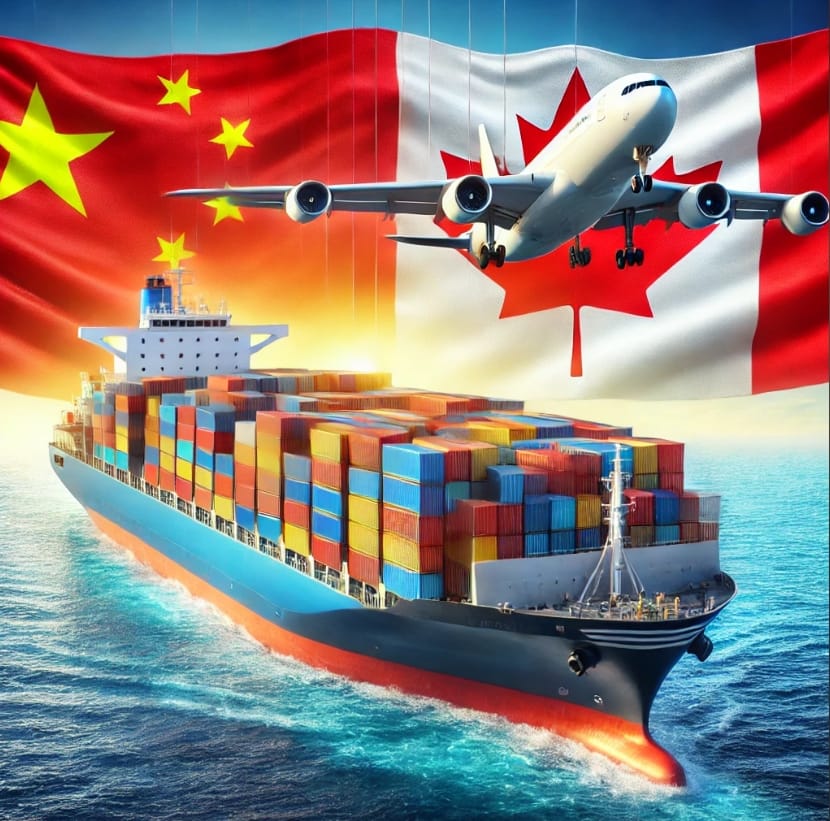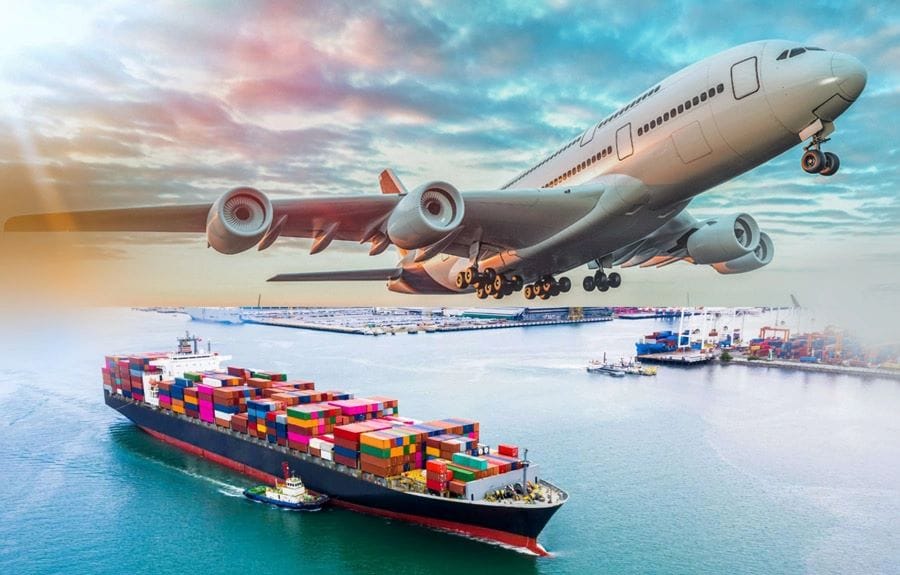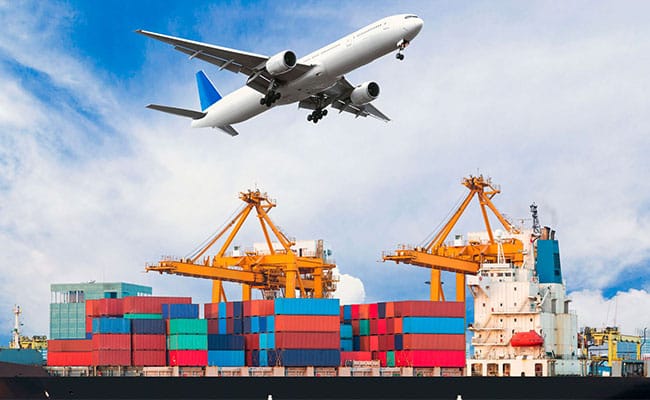With the growing international trade, Canada is the world’s second largest economy, and the transportation of goods between China and Canada is particularly important. Understanding the transportation costs between the two countries is very helpful for companies or individuals to plan transportation plans. This article will introduce this in detail.

How to Ship from China to Canada
The main modes of transportation from China to Canada include sea and air transportation. The specific choice depends on the type of goods and budget. The following is a detailed introduction to the two main modes of transportation:
Sea freight is low in cost and is suitable for bulk goods, heavy goods, and non-time-sensitive goods. The common methods are FCL and LCL.
Goods are transported from China’s major export ports including Shanghai, Ningbo, Shenzhen and Tianjin to Canada’s major ports of Vancouver, Montreal and Halifax. It usually takes 20-30 days, depending on the route, shipping company and destination.
Air freight is the fastest mode of transportation, usually a single package for small, high-value, time-sensitive goods. The frequency of flights is high, and the flexibility and timeliness of cargo transportation are better.
Cargo is transported from major airports in China, including Shanghai, Guangzhou, and Beijing, to major ports in Canada, including Vancouver, Montreal, and Toronto. The air transportation time is relatively fast, usually 3-6 days.
How to Calculate the Cost from China to Canada
The freight from China to Canada is generally calculated based on the actual weight or volumetric weight of the goods, whichever is greater, so that the freight forwarder can reasonably calculate large light goods and small heavy goods.
Actual weight
Actual weight refers to the actual weight of the goods, in kilograms (kg).
Volumetric weight
Volume weight is calculated based on the volume of the goods to ensure that reasonable fees are charged for goods that take up a lot of space.
Calculation formula: Weight (kg) = Length (cm) × Width (cm) × Height (cm) ÷ 6000.
If the volumetric weight of the goods is higher than the actual weight, the freight is calculated based on the volumetric weight.
Shipping Cost from China to Canada
The composition of transportation costs is very complex, involving multiple aspects of costs. In addition to the basic transportation costs, there are some additional costs that may affect the total cost:
- Fuel surcharge: according to changes in international oil prices.
- Port charges: including unloading, storage, port handling fees, etc. at the destination port.
- Customs clearance fees: tariffs and customs clearance fees of the importing country, depending on the type and value of the goods and the customs clearance company.

LCL Shipping Cost from China to Canada
Less than Container Load (LCL) is sharing a container with other customers. It is suitable for small quantities of goods and is generally calculated based on the volume and weight of the goods.
| POL (port of loading) | POD (port of discharge) | LCL Cost/CBM |
|---|---|---|
| Shanghai | Vancouver | $50-$150 |
| Shenzhen | Vancouver | $60-$130 |
| Qingdao | Vancouver | $55-$140 |
| Ningbo | Vancouver | $70-$130 |
| Shanghai | Montreal | $50-$150 |
| Shenzhen | Montreal | $55-$135 |
| Qingdao | Montreal | $65-$140 |
| Ningbo | Montreal | $60-$140 |
| Shanghai | Halifax | $50-$150 |
| Shenzhen | Halifax | $55-$135 |
| Qingdao | Halifax | $55-$150 |
| Ningbo | Halifax | $55-$140 |
Cost of Shipping 20ft and 40ft Containers from China to Canada
Container shipping from China to Canada is suitable for large-volume cargo transportation. There are two main types of containers: 20ft and 40ft. The following is the cost range of sea container:
| POL (port of loading) | POD (port of discharge) | 20ft container cost | 40ft container cost |
|---|---|---|---|
| Shanghai | Vancouver | $2050-$3250 | $4000-$4200 |
| Shenzhen | Vancouver | $2100-$3300 | $4050-$5250 |
| Qingdao | Vancouver | $2050-$3250 | $4050-$5250 |
| Ningbo | Vancouver | $2000-$3400 | $4050-$5350 |
| Shanghai | Montreal | $2050-$3450 | $4050-$5200 |
| Shenzhen | Montreal | $2000-$3200 | $4000-$5300 |
| Qingdao | Montreal | $2050-$3350 | $4050-$5200 |
| Ningbo | Montreal | $2000-$3150 | $4050-$5150 |
| Shanghai | Toronto | $2050-$3250 | $4050-$5250 |
| Shenzhen | Toronto | $2050-$3250 | $4000-$5300 |
| Qingdao | Toronto | $2000-$3300 | $4000-$5200 |
| Ningbo | Toronto | $2050-$3100 | $4050-$5150 |
Learn about the cost of shipping containers from China to other countries: Cost of Shipping 20ft and 40ft Containers from China to USA
Air Freight Cost from China to Canada
Air freight costs are generally higher, usually charged based on the larger of actual weight and volumetric weight, and vary depending on routes, airlines and seasons. The following are detailed costs:
| Departure Airport (China) | Arrival Airport (Canada) | Cost Range (USD/kg) |
| Shanghai Pudong | Vancouver | $6.0 – $15.0 |
| Guangzhou Baiyun | Vancouver | $7.0 – $10.8 |
| Beijing Capital | Vancouver | $6.5 – $10.8 |
| Shanghai Pudong | Toronto Pearson | $7.5 – $12.0 |
| Guangzhou Baiyun | Toronto Pearson | $6.0 – $10.5 |
| Beijing Capital | Toronto Pearson | $6.5 – $11.8 |
| Shanghai Pudong | Montreal Pierre Elliott Trudeau | $6.0 – $10.5 |
| Guangzhou Baiyun | Montreal Pierre Elliott Trudeau | $7.0 – $10.8 |
| Beijing Capital | Montreal Pierre Elliott Trudeau | $6.0 – $15.0 |
If you are interested in the costs of shipping from China to other countries: How Much Does it Cost to Ship from China to USA
Tips to Save on Shipping Costs from China to Canada
To reduce shipping costs from China to Canada, consider the following strategies:
Choose a reliable freight forwarder
Work with an experienced freight forwarder to get more competitive prices and services.
Book in advance
By booking shipping services in advance, you can lock in lower shipping rates and avoid rising costs during peak seasons.
Optimize cargo packaging
Reducing the volume and weight of goods can effectively reduce transportation costs, especially in air freight.
Choose the right port
Some ports are cheaper than others, and shipping costs can be reduced by choosing the right port of departure and port of destination.
Bulk transportation
The scale effect of maritime transportation is significant. Batch transportation can significantly reduce unit transportation costs. If conditions permit, the goods should be concentrated and transported at one time.

How to Calculate Tariffs from China to Canada
Tariff calculation is a key part of the cost from China to Canada. Here is a detailed introduction:
- Determine the customs valuation (Customs Value): Customs valuation is the basis for calculating tariffs: CIF = cost of goods + transportation costs + insurance costs
- Find the HS code of the product: Each product has an HS code (Harmonized System Code), which is the standard for global commodity classification and is used to determine the tariff rate of the product. Generally, the tariff rate of a product is usually between 0% and 35%
- Value Added Tax (VAT): Canada’s standard VAT rate is 5%. Almost all imported goods are subject to VAT. VAT = (declared value + tariff) × VAT rate
Because of the China-Canada Free Trade Agreement, tariffs on certain goods may be reduced or exempted according to the agreement. You can check it through the Canada Border Services Agency (CBSA) or related trade websites.
Learn more: Customs Clearance and Fees
The shipping cost from China to Canada is affected by many factors, including the type of goods, mode of transportation, port of destination and port of departure, etc. Through this article, you can learn how to choose and plan the appropriate transportation plan to maximize the cost savings and ensure that the goods arrive at the destination safely.
